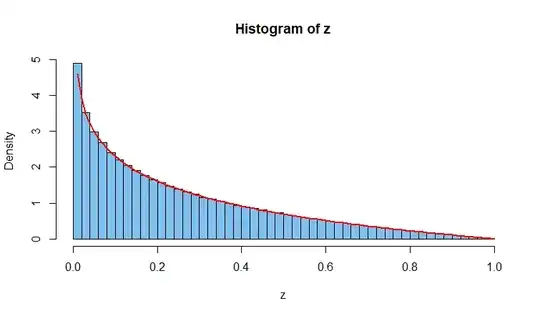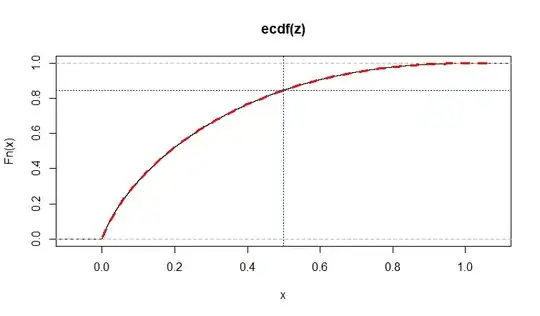I am trying to formulate the following question. X and Y are IID , uniform r.v. with ~U(0,1)
What is the probability of P( XY > 0.5) = ?
0.5 is a constant here and can be different.
I do respect the geometrical solutions but what i would like to see and understand is the generic approach since X and Y can be other distributions. Specificially solutions through Z = X.Y substition, joint distribution/convolution.
I tried the following conversion. Z = XY and dX = dZ/Y
then
$$ P(Z>0.5) = \int_{0.5}^1 \! f(z/y,y) \, \mathrm{d}y \mathrm{d}{z/y}. $$ $$ = \int_{0.5}^1 \! \int_{0}^{z} \! fy(y)fx(z)\, \mathrm{d}y \mathrm{d}{z/y}. $$ since fy(y) and fx(z) is 1 and 1/z s integral is ln(y) it simplifies to $$ = \int_{0.5}^1 \! ln(z) fx(z)\, \mathrm{d}z. $$
which i am not sure about the correct formulation especially the boundries.
--Edit The standard double integral solution over X and Y is as follows. f(x,y)dydx = f(x)f(y)dy dx since they are IID.
$$ = \int_{0.5}^1 \! \int_{0.5/x}^{x} \! fy(y)fx(x)\, \mathrm{d}y \mathrm{d}{x}. $$ $$ = (1-ln(2))/2 $$ $$ ~=0.15342 $$
The solution through Z=X.Y is K.A. Buhr's to the bottom:

